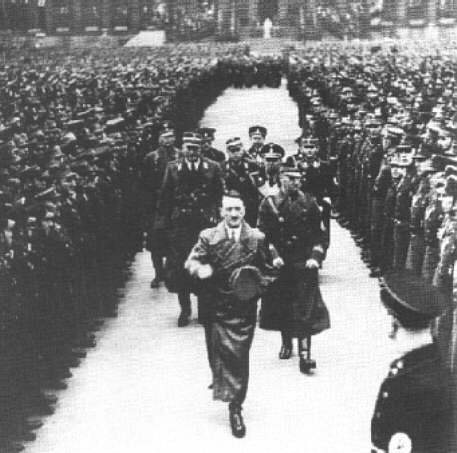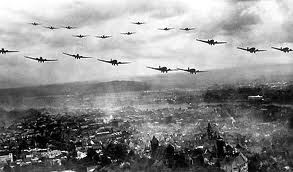At 4:45 a.m., some 1.5 million German troops invade Poland all along its 1,750-mile border with German-controlled territory. Simultaneously, the German Luftwaffe bombed Polish airfields, and German warships and U-boats attacked Polish naval forces in the Baltic Sea.
Nazi leader Adolf Hitler claimed the massive invasion was a defensive action, but Britain and France were not convinced. On September 3, they declared war on Germany, initiating World War II.

To neutralize the possibility that the USSR would come to Poland’s aid, Germany signed a nonaggression pact with the Soviet Union on August 23, 1939. In a secret clause of the agreement, the ideological enemies agreed to divide Poland between them.
Hitler gave orders for the Poland invasion to begin on August 26, but on August 25 he delayed the attack when he learned that Britain had signed a new treaty with Poland, promising military support should it be attacked. To forestall a British intervention, Hitler turned to propaganda and misinformation, alleging persecution of German-speakers in eastern Poland. Fearing imminent attack, Poland began to call up its troops, but Britain and France persuaded Poland to postpone general mobilization until August 31 in a last ditch effort to dissuade Germany from war.
Shortly after noon on August 31, Hitler ordered hostilities against Poland to begin at 4:45 a.m. the next morning. At 8 p.m. on August 31, Nazi S.S. troops wearing Polish uniforms staged a phony invasion of Germany, damaging several minor installations on the German side of the border. They also left behind a handful of dead concentration camp prisoners in Polish uniforms to serve as further evidence of the supposed Polish invasion, which Nazi propagandists publicized as an unforgivable act of aggression.
At 4:45 a.m. on September 1, the invasion began. Nazi diplomats and propagandists scrambled to head off hostilities with the Western powers, but on September 2 Britain and France demanded that Germany withdraw by September 3 or face war. At 11 p.m. on September 3, the British ultimatum expired, and 15 minutes later British Prime Minister Neville Chamberlain went on national radio to solemnly announce that Britain was at war with Germany. Australia, New Zealand, and India followed suit shortly thereafter. At 5:00 p.m., France declared war on Germany.
In Poland, German forces advanced at a dizzying rate. Employing a military strategy known as the blitzkrieg, or “lightning war,”
The Polish army was able to mobilize one million men but was hopelessly outmatched in every respect. Rather than take a strong defensive position, troops were rushed to the front to confront the Germans and were systematically captured or annihilated. In a famously ill-fated strategy, Polish commanders even sent horsed cavalry into battle against the heavy German armor. By September 8, German forces had reached the outskirts of Warsaw, having advanced 140 miles in the first week of the invasion.
The Polish armed forces hoped to hold out long enough so that an offensive could be mounted against Germany in the west, but on September 17 Soviet forces invaded from the east and all hope was lost. The next day, Poland’s government and military leaders fled the country. On September 28, the Warsaw garrison finally surrendered to a relentless German siege. That day, Germany and the USSR concluded an agreement outlining their zones of occupation. For the fourth time in its history, Poland was partitioned by its more powerful neighbors.
Despite their declaration of war against Germany, Britain and France did little militarily to aid Poland. Britain bombed German warships on September 4, but Chamberlain resisted bombing Germany itself. Though Germans kept only 23 divisions in the west during their campaign in Poland, France did not launch a full-scale attack even though it had mobilized over four times that number. There were modest assaults by France on its border with Germany but these actions ceased with the defeat of Poland. During the subsequent seven months, some observers accused Britain and France of waging a “phony war,” because, with the exception of a few dramatic British-German clashes at sea, no major military action was taken. However, hostilities escalated exponentially in 1940 with Germany’s April invasion of Norway and May invasion of the Low Countries and France.
In June 1941, Hitler attacked the USSR, breaking his nonaggression with the Soviet Union, and Germany seized all of Poland. During the German occupation, nearly three million Polish Jews were killed in the Nazi death camps. The Nazis also severely persecuted the Slavic majority, deporting and executing Poles in an attempt to destroy the intelligentsia and Polish culture. A large Polish resistance movement effectively fought against the occupation with the assistance of the Polish government-in-exile. Many exiled Poles also fought for the Allied cause. The Soviets completed the liberation of Poland in 1945 and established a communist government in the nation.

